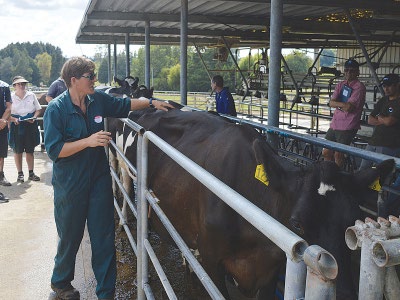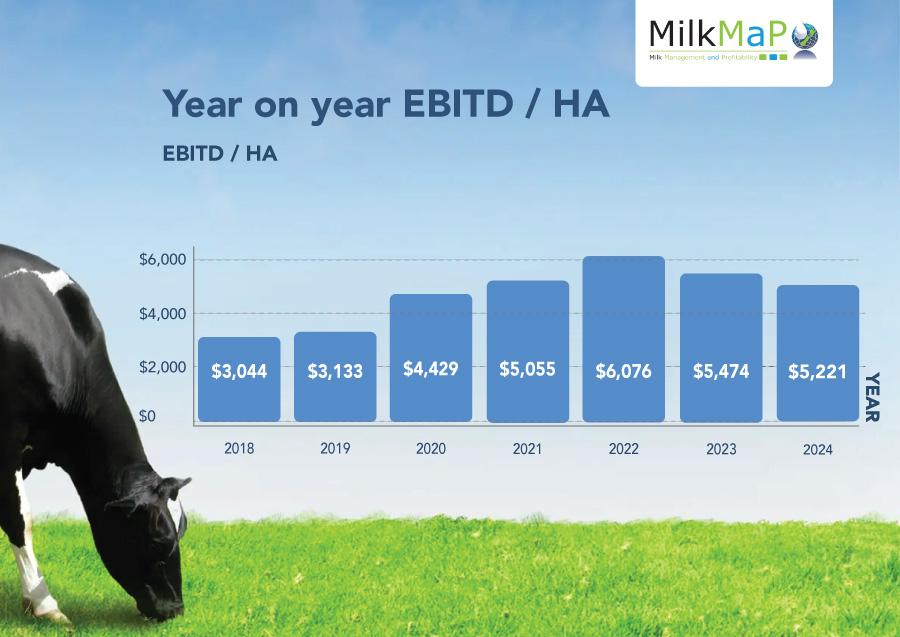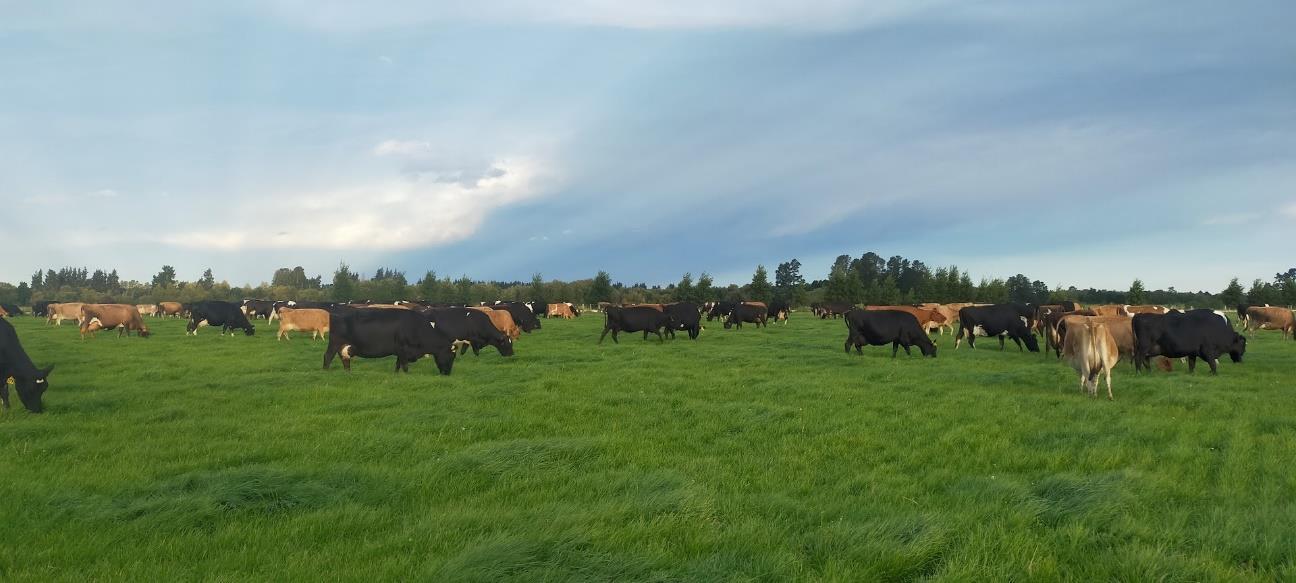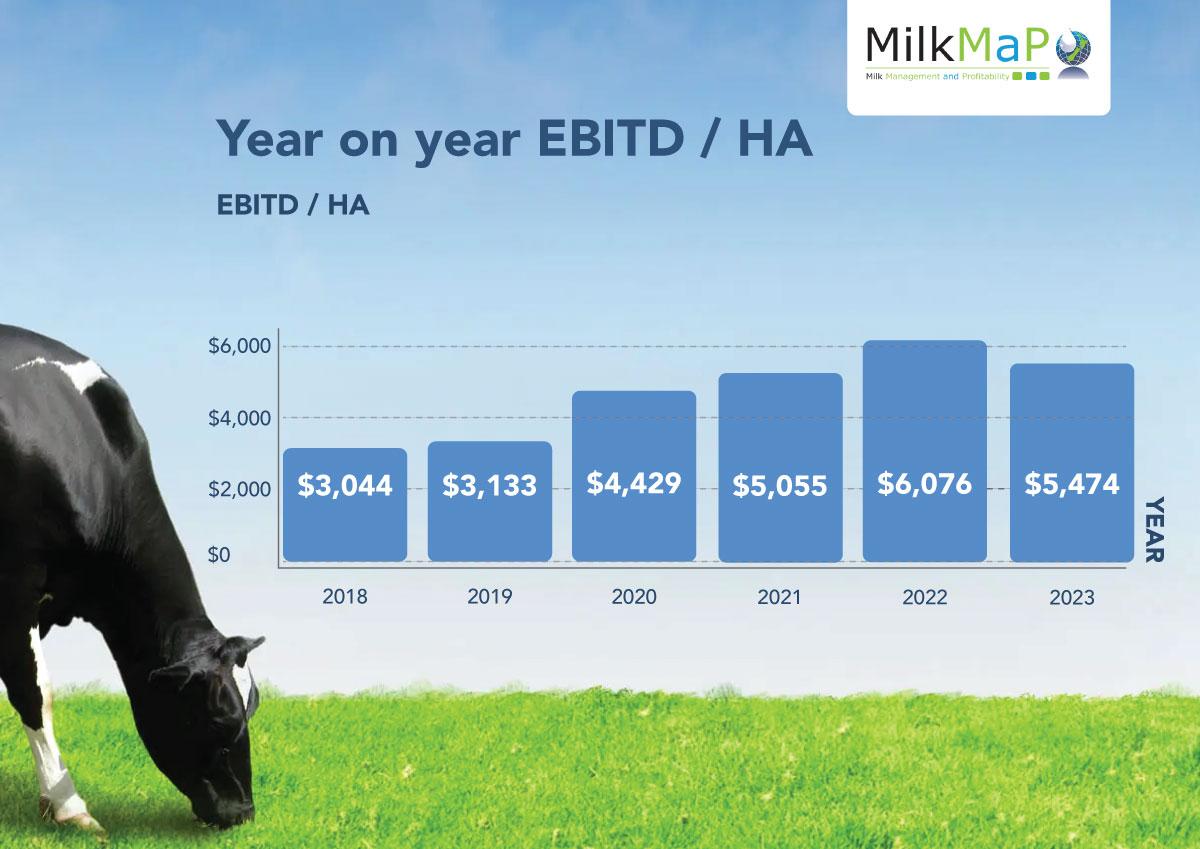Getting more milk from less cows – while adjusting to the nitrogen regulations – is doable according to Mid-Canterbury dairyman Jeremy Duckmanton.
Jeremy wasn’t born on a dairy farm and has built his equity from the ground up. The 42-year-old now 50/50 sharemilks two operations at Lauriston and Valetta, milking a total of 1870 cows for a combined production average of 531kg milk solids (MS) per cow. He is with only his third employer and is on a path that he says is viable and sustainable in today’s industry – partly because he tripped over a Facebook advertisement.
The two properties are owned by Murray and Wendy Marshall and sharemilked by Jeremy under DMT & OPS Dairies. Ashmore Downs is managed by Blake Gordon, who is milking 930 cows (235ha) for a 2022-2023 average of 530kg MS. Ashleigh Park is managed by Denys Kudinov, milking 940 cows (235ha) for a 2022-2023 average of 532kg MS.
Jeremy focused on dairying early because he said he could see a clear pathway to ownership – despite the early mornings and his initial preference for registered Hereford beef cattle. Employers quickly clocked his potential, putting him into leadership roles when he was just 18. In 2010 he won the Canterbury section of the New Zealand Dairy Industry Awards – finishing runner-up in the national final. It was an experience he found the most valuable for the industry contacts and opportunities that came out of it.
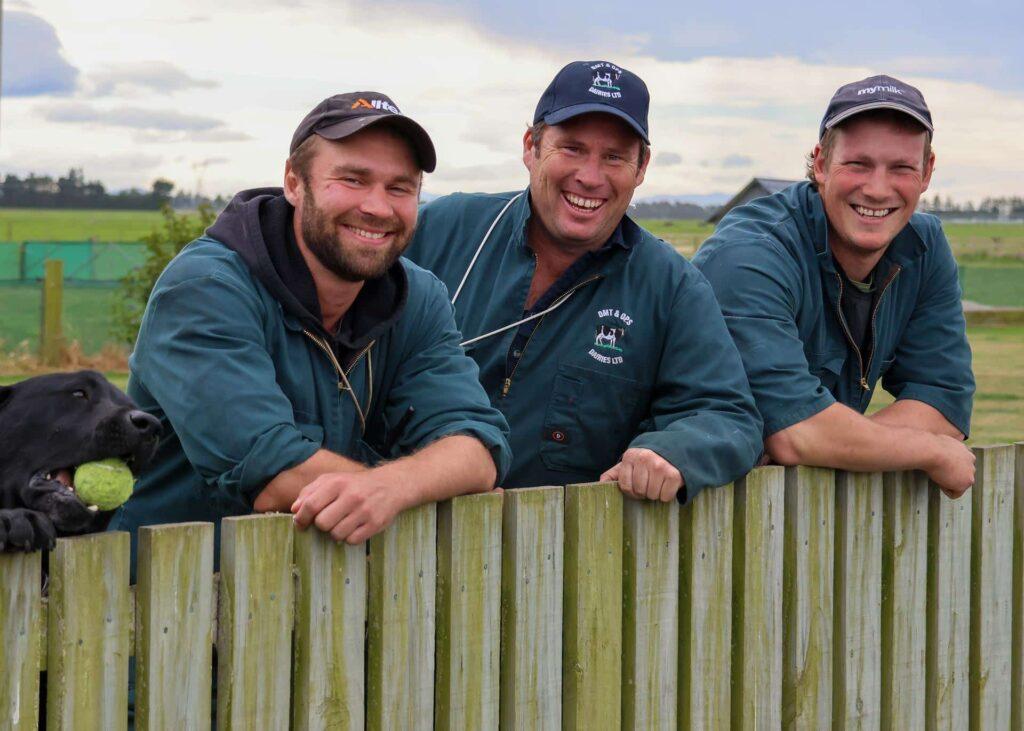
STEPPING INTO SHAREMILKING
Within five years of securing his first lower sharemilking position, he was offered a 50/50 position with Murray and Wendy. He was also involved in a separate equity partnership at Kurow during that time, which is 60km north-west of Oamaru. Tragedy changed Jeremy’s path when he lost his young wife, Stacey, to cancer. He took some time to re-focus on the couple’s family, and ultimately chose to consolidate his business in Canterbury.
“I got out of the day-to-day stuff for a year or two,” Jeremy said, “and that gave me the ability to get some pretty good systems going, and to trust my team. It was a pretty challenging time, but some good things do come out of those situations.”
In June 2022, Murray approached Jeremy and asked if he’d like to replicate what they were doing on a second farm, 20 minutes from the home farm.
“If I didn’t want to, he wasn’t going to do it. But I was ready, so we went again and doubled up on what we have,” Jeremy said. “Blake moved from the home farm to the new farm, and Denys came in on the home farm.”
It’s still early days, but the operation is flying under Jeremy’s stewardship as he continues to refine performance under the industry’s tightening environmental regulations. He said the new world did make him think. His naturally competitive and curious nature – combined with his interest in technology – had already led him to put collars on cows so he was getting a picture of what was happening on-farm.
“I’ve always wanted to keep improving, and, with the environment we’re in now both financially and also with the environmental limitations, I could see our original system [feeding one tonne of supplement per cow a year] wasn’t quite working,” Jeremy said.
“We were stocked at 4.3cows/ha and producing more than 2100kgMS/ha, but things were tightening up around costs for feed, and our ability to grow the grass with the nitrogen limitations.
“I could see we would have to reduce our stocking rate because our supplement use had got up to 1.4-1.5 tonnes/cow (from 1 tonne) to sustain the same production. We were just replacing grass that wasn’t growing because of the nitrogen thing. We were buying the milk, and it didn’t give us any more value.
“I was keen to get more advice on how to do slightly more per cow, so if we dropped our stocking rate it would challenge us to get a bit more out of them.”

TRAVERSING THE TOUGH QUESTIONS
Jeremy said a Facebook advertisement for a two-day Dairymasters course through MilkMaP Consulting caught his attention.
“I’ve always liked to feed cows, but it’s just trying to do it economically. That’s the challenging bit. To get it right.
“I was also keen to upskill a little bit too. The stuff they addressed I probably knew in the background, but perhaps I’d half-forgotten it. There were other things I’d put aside, and the course brought that back into focus. It refreshed me, and when you put two and two together, it starts to make sense.
“The one thing I’ve really learnt since the Dairymasters course, is that it’s not a choice about how much you feed an animal, it is a choice about how many animals you have. Stocking rate is my adjustment tool. It’s uneconomical to underfeed a cow.”
During the course, Jeremy met MilkMaP’s Senior Farm Business Consultant, Cameron Burton, and the two clicked.
“Cam just came across as a guy of our generation,” Jeremy said.
“He wasn’t a salesman, he was an advisor, and you can choose if you take the advice. Sometimes in the past we’ve had people tell me ‘you have to do this’. Cam comes across more that he’s offering the advice, and we can talk through the scenarios about how it fits with us. I found that really appealing because it was a more gentle approach to changing a system that we have had for a number of years.”
The interactions prompted Jeremy to bring Cam into their business in a consultancy role on a regular basis. Cam advises on one property, and they interpret that knowledge and use it across both farms.
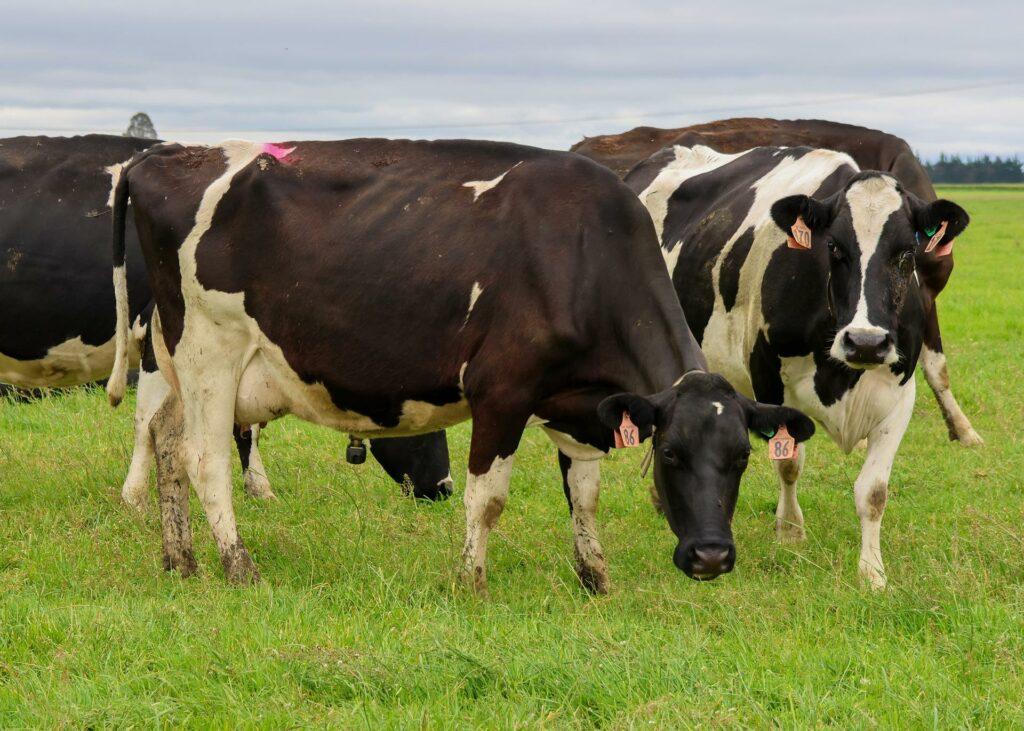
FIRST BIG LIFT
In the first year of their collaboration, they lifted DMT & OPS Dairies’ average production from 495kg MS per cow to 530kg MS per cow.
“On the New Zealand farming system, we’re trying to get as much as we can out of each cow by tweaking little wee timings and transitions. That’s been the bit that has been really pleasing for me, working out those answers.
“I used to think we were pretty good feeders of cows until I realised I could sneak another 200-300kg of supplements into them, and get another 35kg MS from every cow over the season,” Jeremy said.
“We’d been losing grass production because we used to use 300 units of nitrogen 10 years ago and now we’re capped at 190 units. We are definitely noticing the difference.
“We’re probably getting cows to eat more grass now though by challenging them to keep eating, because we’re not pushing the residuals quite as low as we were.
“It’s not physically as big a change as you think. We’re still using PK [palm kernel] and grain – the difference is the timing of when we do that – along with a small strategic introduction of DDG [dried distillers grain] in the early part of the season to drive intake in the shed. That’s what’s been the lightbulb moment for us.”
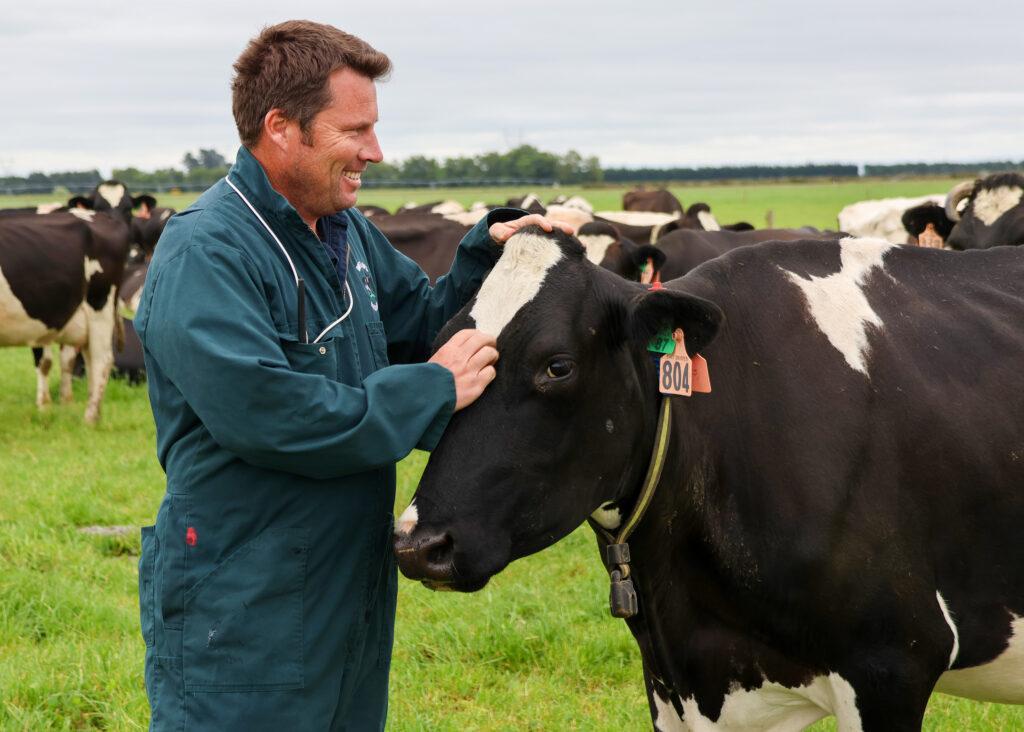
POLE POSITION
Jeremy says on balance, they are in a good position.
“MilkMap has given me the confidence to drop my stocking rate without losing performance. I knew I had to drop it, so I’ve tested that theory out and we are maintaining that per-cow production at the lower stocking rate. There is still room for gain, but I’m confident we’re getting closer to where our new normal is.”
He said the Ashleigh Park farm is on track to do 530kg MS a cow, which is on par with last year, but with less cows and feeding 250kg/cow of supplement less.
“We’ve replaced some of that supplement with good grass, and that piece of the puzzle is a work in progress.
“I think the big thing for me is that I’m feeling like we’re getting into a more-balanced farming position. With the stocking rates, production and farm working expenses, I think that is putting us in a better spot than we were in the past.
“We’re running four cows/ha this year and still we’re doing about the same production as last year daily, which is more per cow. Production was down in the spring because it was cold, but I think we’re about 4% down in production with 5% less cows. So, that was essentially still a 1% increase on last year.
“Bearing in mind that last year we had a significant increase from 495kgMS/cow to 530kgMS/cow.”
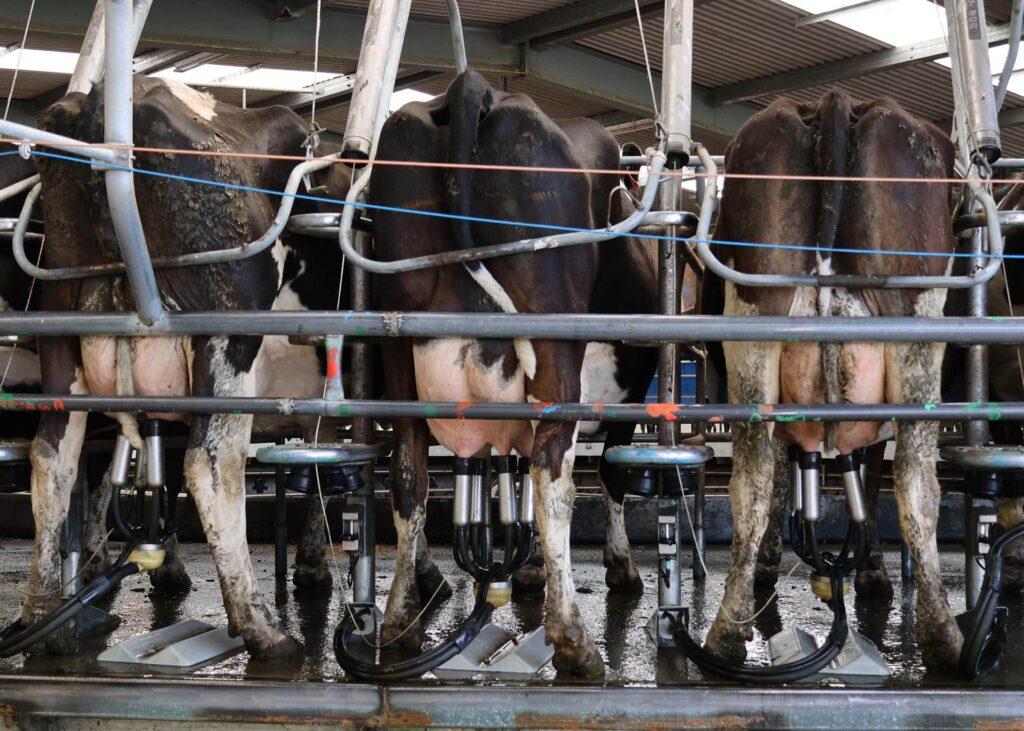
REGULAR RESETS
Jeremy said Cam’s six-weekly visits offer fresh perspective and have given them a chance to react and reset.
“We’ve got the gains that we wanted out of it. When you start to spread yourself a little thinner, it’s quite nice every six weeks to have a forced reset. Cam comes in and looks over things and we check how everything is tracking, and there is a bit of conversation in between times with the odd decision around feeding and stuff. He’s good. Cam trusts me, and there’s no point in me not telling him the truth.”
Another observation has been what the cows have told Jeremy.
“Our cows used to be content 95% of the time, but a content cow can eat more than that if it’s available. That can get you to the next step in production gains if you’re aware of it.”
Jeremy acknowledged that if the milk price was travelling at $10/kg MS with no environmental limitations, he would have more cows on. But, getting to this production position in the current climate has been empowering.
“That wintering and transition back out of winter to get cows into a position to be able to milk well has been a key shift to achieving that higher peak milk,” he says.
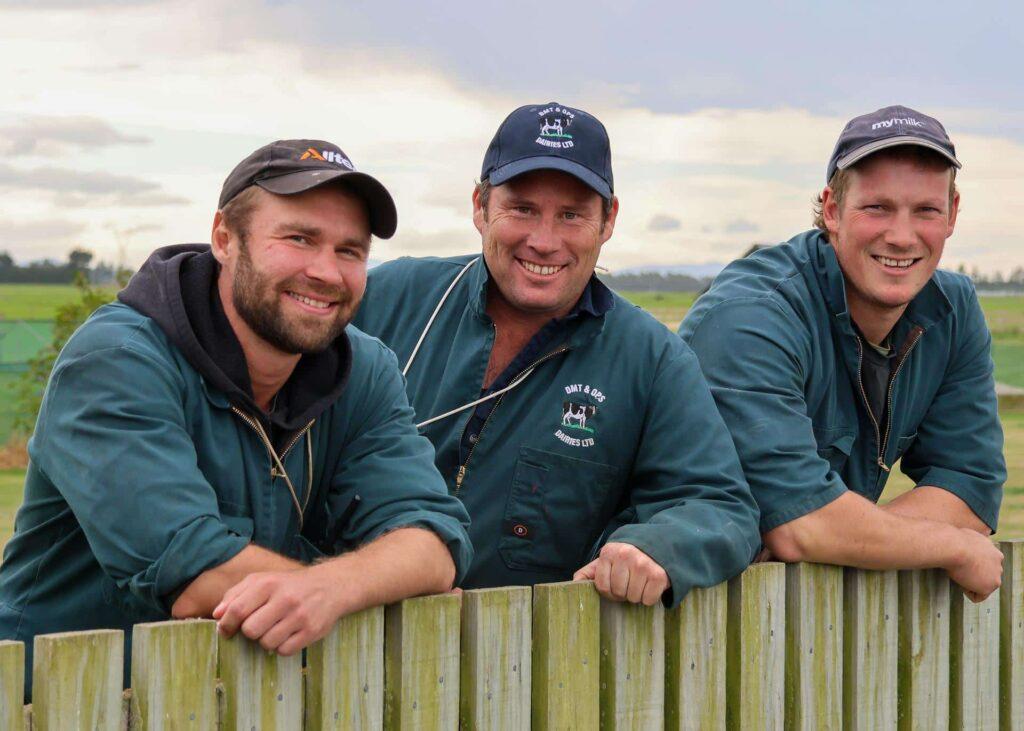
PERSONAL PEACE
Within the personal and professional growth for his trusted team, Jeremy has found his happy place. He is in his third position within the industry, and he’s been with Murray and Wendy for 11 seasons.
“The three people I’ve worked for have really helped me. I was eight years with the first one, five with the second, and 11 with Murray – and they have all been massive in my career,” Jeremy said.
This is a business partnership that has become a family, which now also includes his partner in life, Erica Dynes.
Jeremy’s final industry goal is not far away.
“One of my big goals is to own my own farm. That would be the ideal situation for me. Then maybe one day be able to have a sharemilker on that as part of a way of giving back to the industry.
“When the time comes to step back I would still like some involvement but ‘retirement’, for me, is choosing whether to go to work or not, and production, profit and people are the key to achieving that.”



